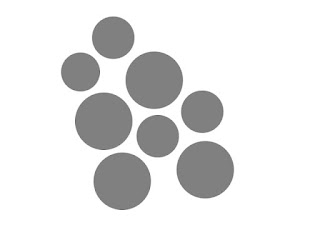I find I come up with ideas best when I'm not actively working on the problem. Or that is when ideas come to me. The key is to start sketching and brainstorm any ideas you have, good or bad. Once you have some initial ideas down, if you get stuck it can be helpful to step away from your work. Go for a walk. The different environment may jog your brain. I find I get a lot of ideas when I am walking. I don't know if it is the movement that helps.
Another thing I do is work in coffee shops when I am in the concept stage of a project. This puts me in more of a work mode, as I am out of the house. I go to my local coffee shop and work there for a few hours. I find I am more productive when I do this. I also keep a notepad by my bed to jot down any ideas. Sometimes when I stop actively working on a concept and let my brain relax (such as before bed) ideas will come into my brain. Usually this only happens if I have already started working on the project. My brain continues working subconsciously on the project.
Having a relaxing bath or shower also helps as it lets your brain relax and subconsciously come up with ideas. Basically I find my best ideas happen when I am not working. My process is work, relax, jot down ideas, continue working. I also find sleeping on ideas helps, as my brain works on the problem while I am sleeping, and in the morning I have new ideas.
Friday, October 28, 2016
Friday, October 21, 2016
Logo design
This is a logo design I finished working on recently. It is for a scrapbook / rehabilitation company. The client wanted a banner-type logo with just text. I had fun playing around with brush lettering and hand lettering, to give it a creative feel. I especially like how "scrapbook" turned out.
Friday, October 14, 2016
Design fundamentals
A fellow student (or instructor?) once commented to me that design is a bunch of CRAP: Cropping, Repetition, Alignment and Proximity. I heard that many years ago, and it still sticks because it is quite clever. Here are some of the things designers need to be aware of.
Cropping is how your image is framed (what part of the photo you can see).
Repetition is elements being copied numerous times.

Alignment is how the different elements in your design line up with each other.
Proximity is the sense of distance between objects.
There are many other things a designer has to consider.
Balance - symmetrical or a-symmetrical
Symmetry - elements on both sides are arranged similarly
Scale/Proportion - elements of differing sizes in relationship with each other
Similarity and Contrast - Contrast with a clear foreground and background shows a focal point.
Reference: monkeybusiness.com.br
Cropping is how your image is framed (what part of the photo you can see).

Alignment is how the different elements in your design line up with each other.
Proximity is the sense of distance between objects.
There are many other things a designer has to consider.
Balance - symmetrical or a-symmetrical
Symmetry - elements on both sides are arranged similarly
A-Symmetrical - elements on each side are different but still visually balanced
Hierarchy - the arrangement of elements in order of importance. For example, different weights applied to show hierarchy.
Scale/Proportion - elements of differing sizes in relationship with each other
Similarity and Contrast - Contrast with a clear foreground and background shows a focal point.
Reference: monkeybusiness.com.br
Friday, October 07, 2016
Psychology of Typefaces
A serif font has small lines attached to the end strokes in the letter. A sans serif font does not have these small lines.
Serif - tradition, respectable, reliable, comfort
Sans serif - stability, clean, modern
Script - elegance, creativity, affectionate

Display - unique, expressive, amusing
Fonts can also affect your sense of taste.Sans serif - plain, neutral
Slab serif - meaty
Round - sweet
Jagged - salty, sour
Reference: companyfolders.com, brandongaille.com
Subscribe to:
Comments (Atom)














